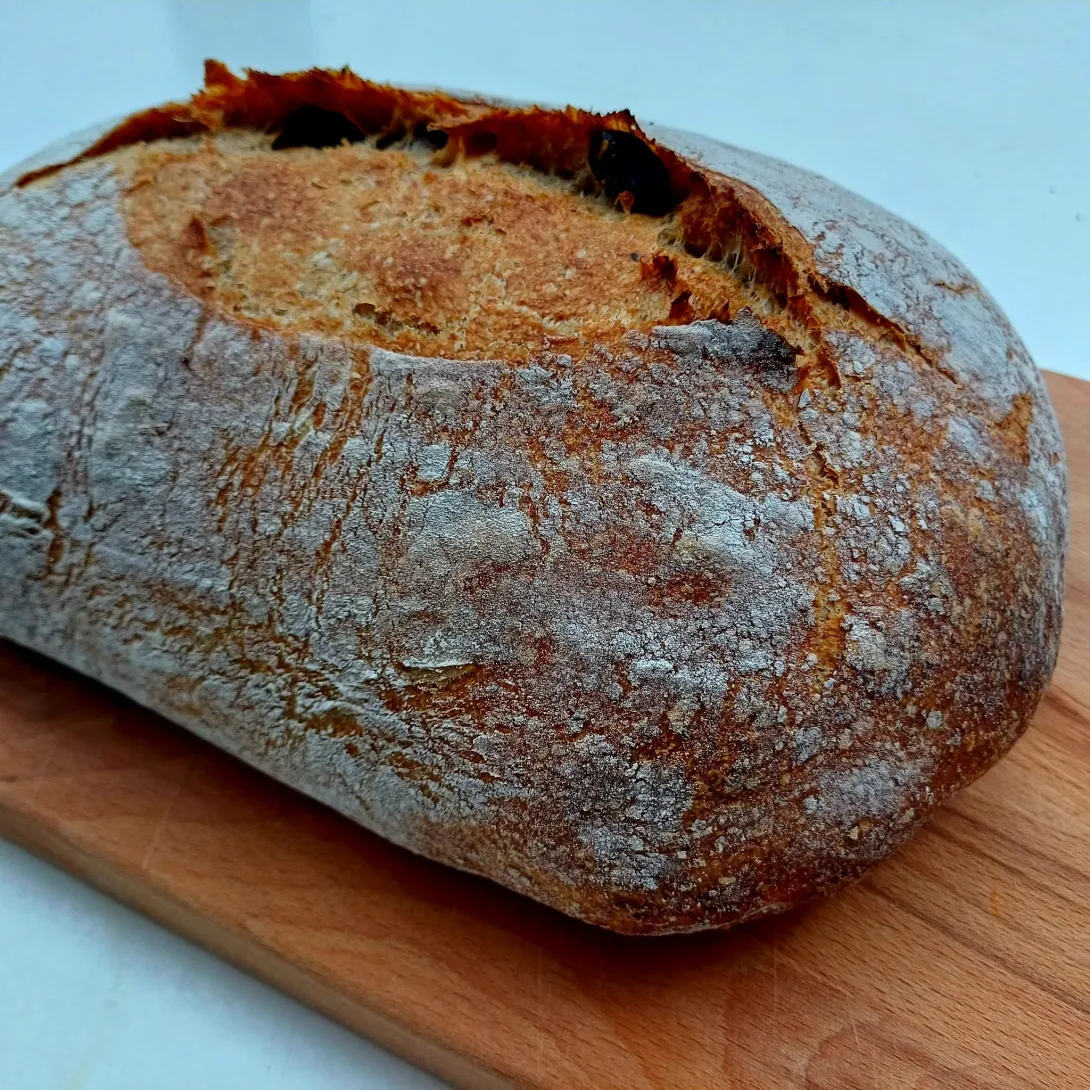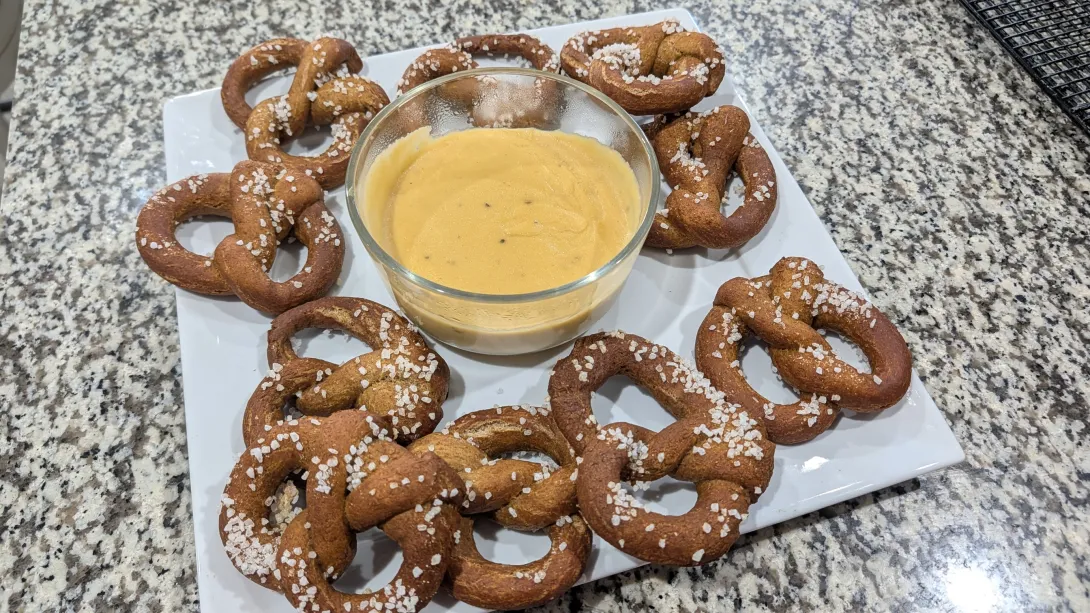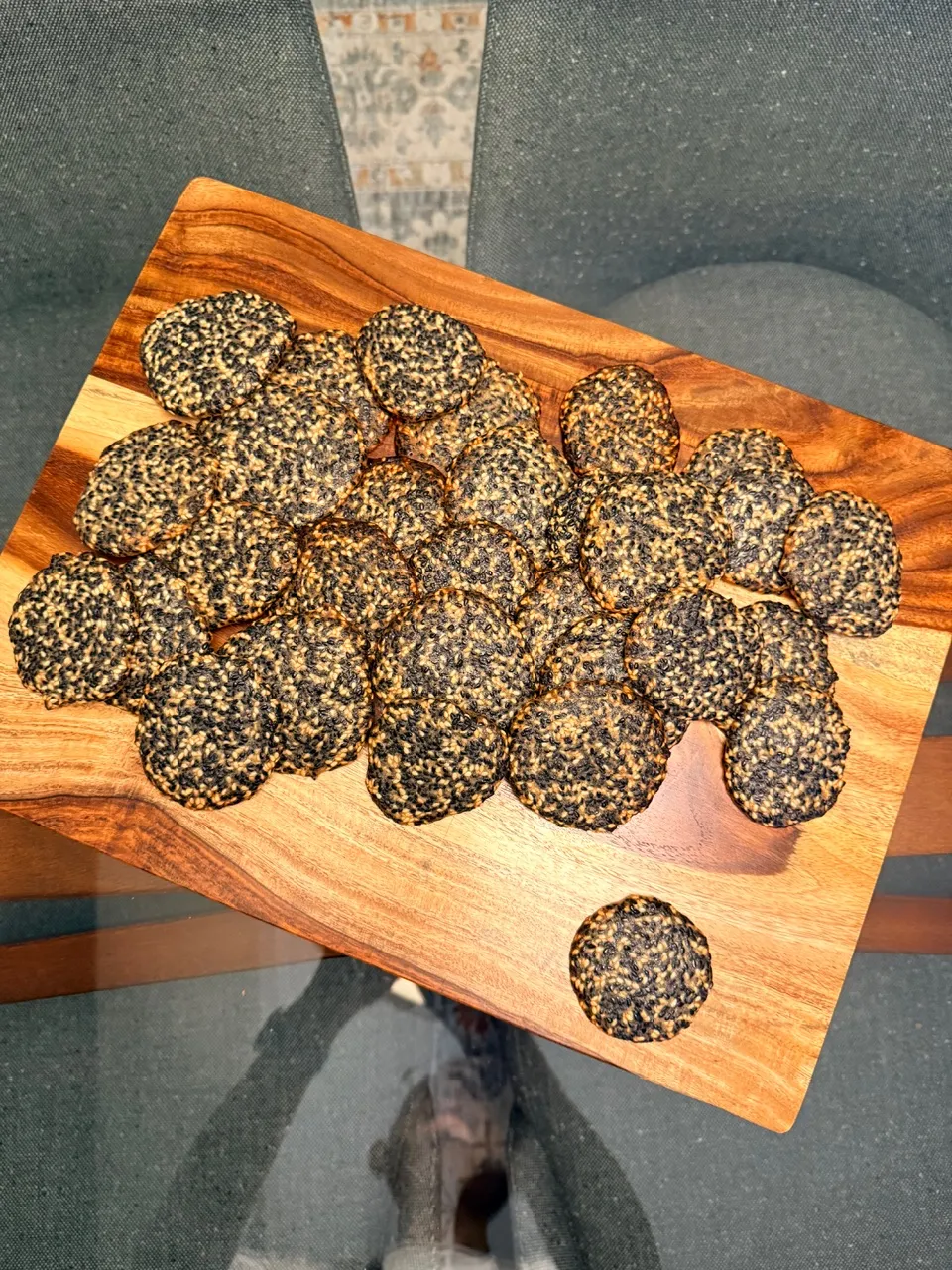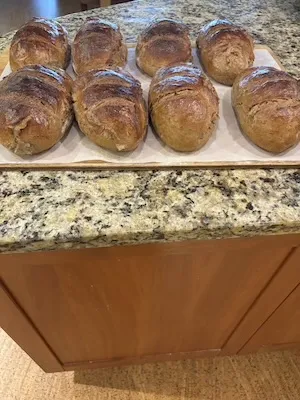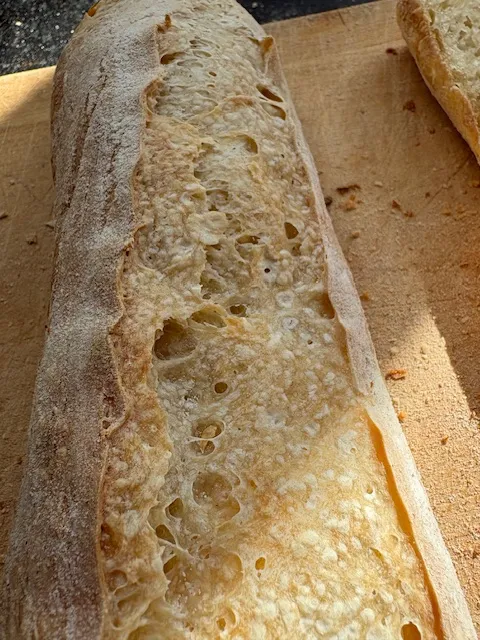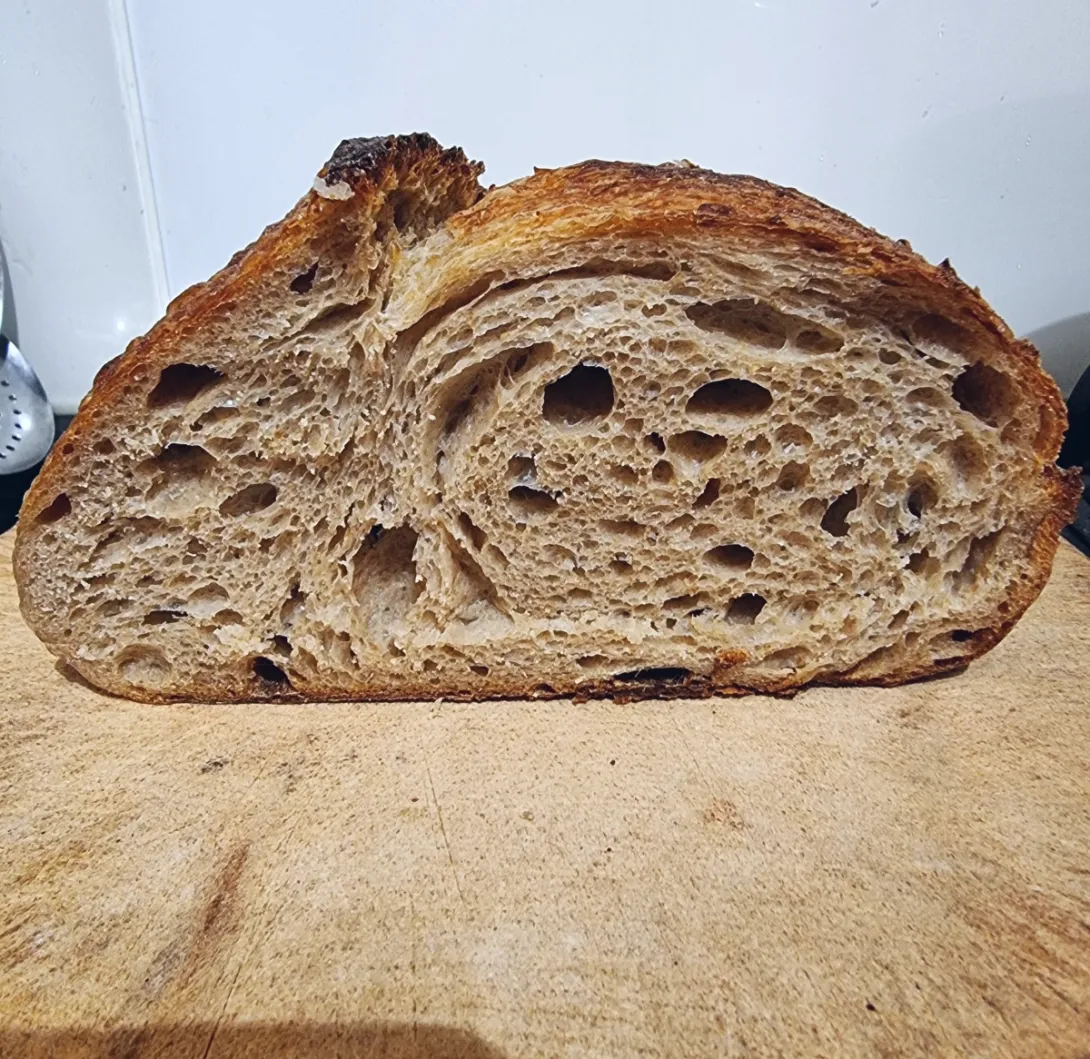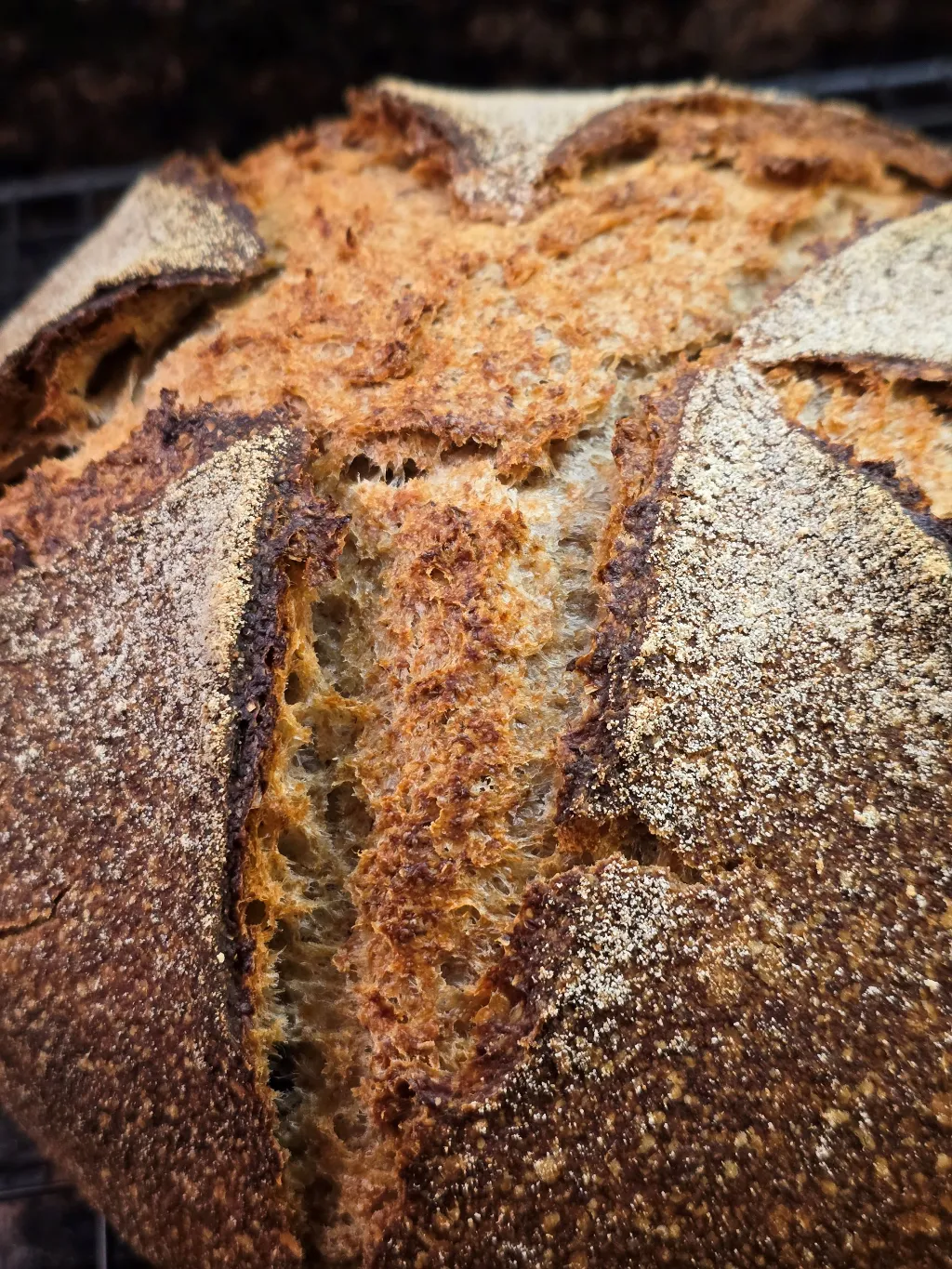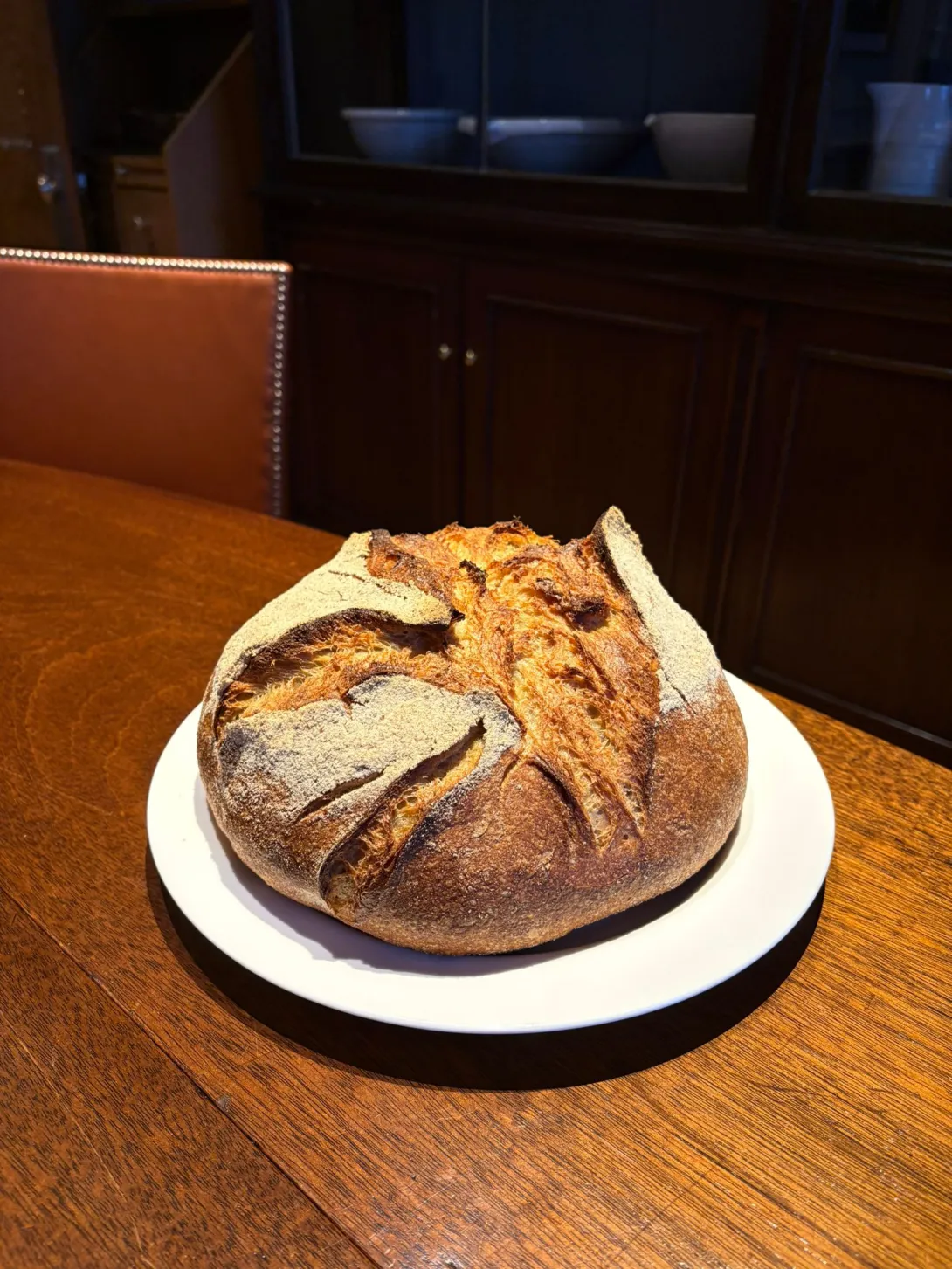Durum Purple Sweet Potato Sourdough
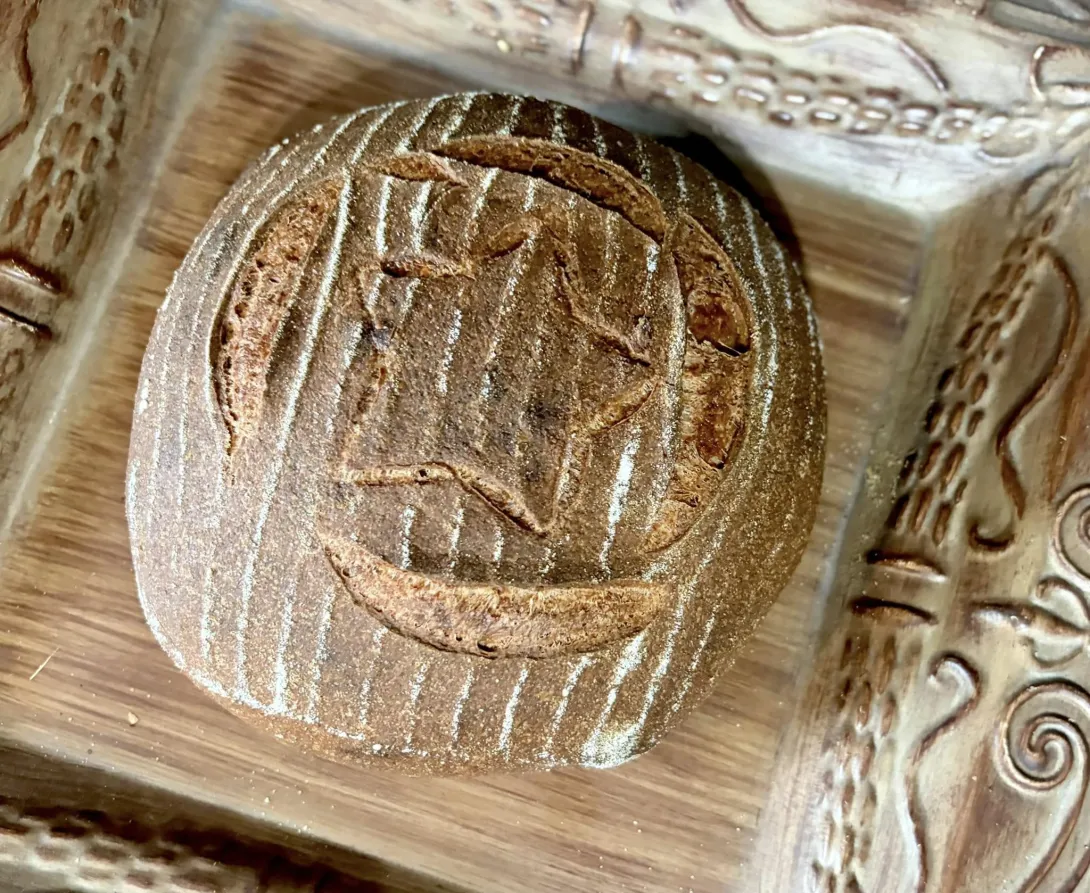
Made with roasted sweet potatoes, fresh milled durum, fresh milled Blue Hopi corn flour and King Arthur bread flour.
I was happy with the nice purple flavor.
I usually have a higher % of fresh milled than this bake, so I was expecting a more open crumb. I’m so afraid of over-Fermentation using FMF that I could have pushed bulk to 75-85% easily and achieved a more open crumb.
Either way, it’s a flavorful bake.
- Log in or register to post comments
- 9 comments
- View post
- Isand66's Blog
